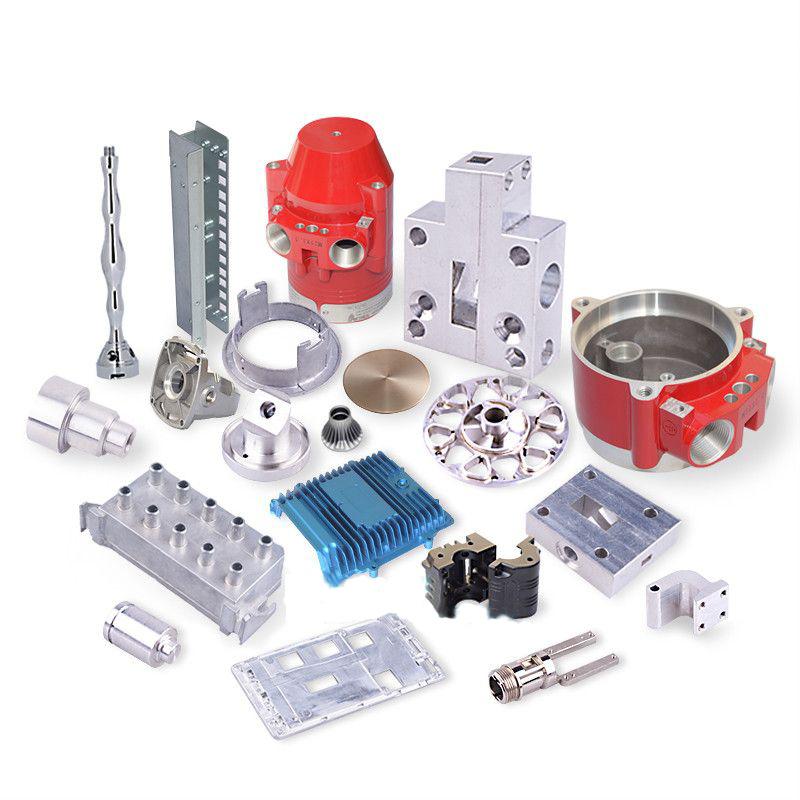1. In CNC lathe processing, the determination of processing routes generally follows the following principles.
① The precision and surface roughness of the workpiece should be guaranteed.
② Make the processing route the shortest, reduce idle time, and improve processing efficiency.
③ Simplify the workload of numerical calculation as much as possible and simplify the processing procedures.
④ For some reusable programs, subroutines should be used.
2. CNC machining has the following advantages:
① The number of tooling is greatly reduced, and complex tooling is not required for processing parts with complex shapes. If you want to change the shape and size of the part, you only need to modify the part processing program, which is suitable for the development and modification of new products.
②The processing quality is stable, the processing precision is high, and the repetition accuracy is high, which is suitable for the processing requirements of aircraft.
③In the case of multi-variety and small-batch production, the production efficiency is higher, which can reduce the time for production preparation, machine tool adjustment and process inspection, and reduce the cutting time due to the use of the optimal cutting amount.
④ It can process complex profiles that are difficult to process by conventional methods, and even some unobservable parts can be processed.
The disadvantage of CNC machining is that the machine tool equipment is expensive and requires a high level of maintenance personnel.

Machining: refers to the process of changing the shape or performance of workpieces through mechanical devices. According to different processing methods, it can be divided into cutting processing and pressure processing.
1. Production process: refers to the whole process of manufacturing products from raw materials (or semi-finished products). Mechanical production includes transportation and storage of raw materials, production preparation, rough manufacturing, processing and heat treatment of parts, assembly and debugging of products, painting and packaging.
The content of the production process is very extensive. Modern enterprises use the principles and methods of system engineering to organize and guide production, and regard the production process as a production system with input and output. In the production process, the process of changing the shape, size, position and nature of the production object to make it a finished or semi-finished product is called a process. It is an essential part of the production process.
Its process can be divided into casting, forging, stamping, welding, machining, assembly and other processes. The mechanical manufacturing process generally refers to the sum of the processing process of the parts and the assembly process of the machine, and other processes are called auxiliary processes, such as transportation, storage, power supply, equipment maintenance, etc.
2. Processing: The main feature of the process is that the processing objects, equipment and operators are not changed. Its content is to complete the continuous steps under the conditions of the same processing surface, processing tools and cutting amount. It is called the working stroke, which is the process step completed by the processing tool on the processing surface.
3. Production types are usually divided into three categories:
(1). Single-piece production: produce products with different structures and sizes separately, and rarely repeat production.
(2). Mass production: mass production of the same product throughout the year. The manufacturing process is somewhat repeatable. mass-produced parts.
(3). Mass production: The manufacturing volume of products is very large, and most workplaces often repeat a certain process of a certain part.
4. Original data:
(1). Product assembly drawings and parts drawings.
(2). Quality standards for product acceptance.
(3). The annual production plan of the product.
(4). The production conditions of the manufacturing plant, including the specifications, performance and status quo of machine tool equipment and process equipment, the technical level of workers, the ability of the factory to manufacture process equipment, and the production capacity of the factory for supplying electricity and gas.
(5) Process specification design and standards required for process equipment design, processing of various metal parts, rice metal, cabinets, metal structures, titanium alloys, high-temperature alloys, non-metallic machining, mold design and manufacturing, wind tunnel combustion chamber Body design and manufacture, non-standard equipment design and manufacture, mold design and manufacture.
Precision metal parts processing: hardware processing is the processing of raw materials (stainless steel, copper, aluminum, iron), using lathes, iron beds, drilling machines, polishing, etc., to make various parts according to customer drawings or samples, such as motor shafts, model cars Accessories, fishing gear accessories, product shells, mobile power shells, etc.
Fixture
Various tools used in the manufacturing process. Including tools/fixtures/molds/measuring tools/checking tools/auxiliary tools/fitter tools/fixtures, etc. Welding fixtures, inspection fixtures, assembly fixtures, machine tool fixtures, etc. Mingxiao machining range:
1. Precision machining.
2. Processing of precision equipment parts.
3. Non-standard spare parts processing.
4. Processing of precision special-shaped parts.
5. Processing of hardware machinery parts.
6. Surface treatment of various mechanical parts.
CNC Turned Parts
Assetprecision has specialized in processing precision mechanical parts for many years to help solve customers' technical problems. Drawings and samples can be submitted for single-piece precision machining, CNC processing, small batches of hardware, mechanical parts, etc.


 +8613538580966
+8613538580966

